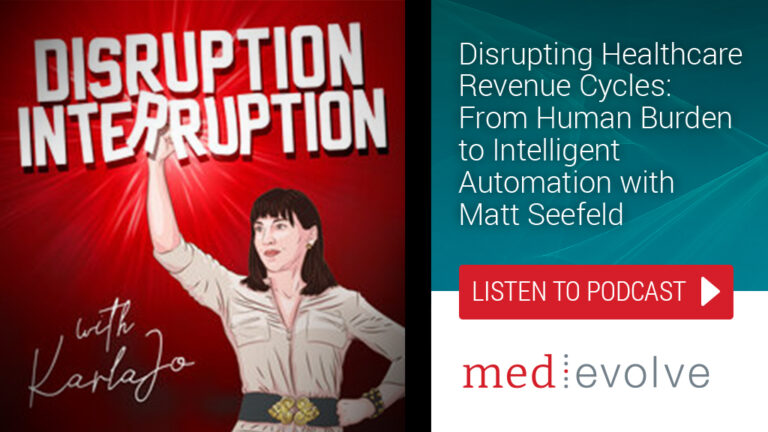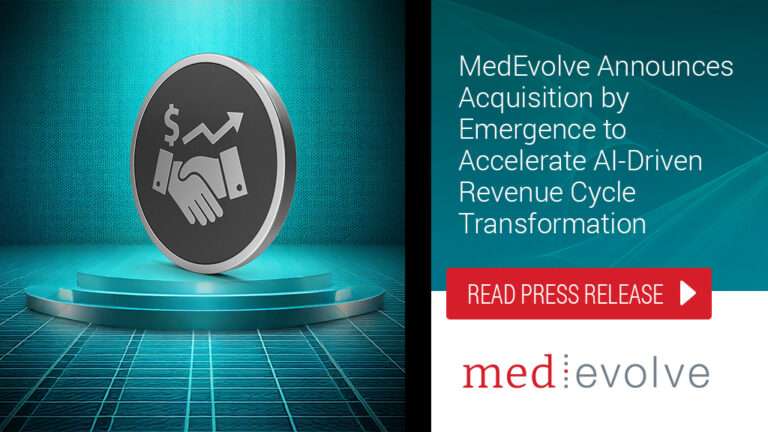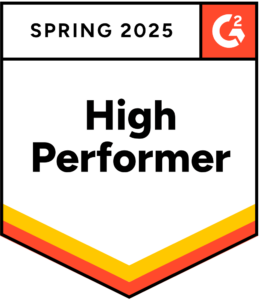Follow through on revenue cycle consultant recommendations to drive financial outcome
I started my career in consulting, where I was asked to go into healthcare organizations to look at people, process, and existing technology, and then make recommendations on how to change all of that to drive financial performance. Most of the time we were brought in at the board level, and they bought into the concept that whatever the consultants say to do, they should do it. About a year after these engagements, we would go back to many of these clients, and the problems that we tried to solve a year ago were still there. They had come back or the managers never followed through on the recommendations.
Choose healthcare technology vendors with a consultative sales & implementation approach
Then, I switched careers and became a vendor. So, the question is, “which is better?” Is it better to be the consultant that goes in and tells you the areas in which you need to improve on to drive benefit, or is it better to be a vendor who’s trying to solve a niche problem with the technology or service? There are pros and cons of both. I think the consultant side gets very frustrating because we spend a lot of time traveling, working with organizations, and trying to impact change. So when changes don’t occur and the results aren’t there, it’s a little bit of a hit to the ego. The flip side of being a vendor can be very frustrating too, because when we go in and sell, it’s a very consultative sale. We do not make the promise that by just installing this technology that you are going to get results.
You have to be willing to look at people in process and how that aligns with the technology I’m selling you to get the result. What’s interesting is that many organizations don’t want to accept that fact. They want to assume that they can go out and just buy technology for whatever it is. Where it becomes frustrating is that we work really hard to develop solutions that will actually drive the benefit that the consultants are promising. So best-case scenario is consultants come in with the technology or augmented service and put it all together. That’s actually where I’ve seen a lot of success in my career is when the consultants are already there, and they know what needs to be done. They bring in the right technology partner and the right services partner to get the results that the consulting firm promised the board of directors and the executive teams.
As a vendor, we do not make the promise that by just installing our technology, that you're going to get results. You have to be willing to look at people in process and how that aligns with the technology I'm selling you to get the result. That's the consulting side included with MedEvolve solutions.
The business challenges are all the same but few healthcare executives actually take the initiative to solve them
I was observing different vendors at a trade show. Everyone’s got their stress balls and little putting greens. Everyone’s hoping that the attendees don’t just walk straight to the bathroom and ignore them. Each one of these vendors is out there with a real solution, a technology or service that they feel is going to be very valuable to these organizations. What’s always interesting to me is that when I talk to executives, they talk about the need to reduce overhead, improve profit margin, improve net revenue, reduce their dependence on labor, and add more automation.
I can list all of the them out, and put them up in front of any prospect I have, and they would all agree on the objectives. Rarely does someone then make the leap to actually find those solutions to get those results. So a year later, I usually have same conversations as a vendor with the same prospects who said a year before that this is what they wanted. They weren’t willing to make a change and they are worse than they were a year ago. That’s no way to run a healthcare business. In today’s economy, you cannot afford to lose a penny on your P&L.
Vendors, partners, and service providers all play critical roles in the healthcare ecosystem, yet their risks are often underestimated. True innovation in healthcare doesn’t just involve adopting new technologies but creating frameworks that ensure those technologies are secure, compliant, and aligned with organizational goals. Without such proactive oversight, even the most advanced solutions can expose a company to inefficiencies, data vulnerabilities, and regulatory risks that compromise both patient care and profitability.
To bridge this gap, healthcare leaders are turning to targeted programs that enhance their ability to manage vendor relationships effectively and securely. By engaging with https://www.risktide.com/, professionals can gain the tools and insights needed to transform how they approach third-party risk management. This means not just identifying potential vulnerabilities but developing the confidence and skill set to take decisive action when issues arise. Through hands-on training and real-world case studies, executives learn to evaluate vendors holistically, strengthen compliance processes, and foster long-term resilience. The result is a shift from reactive management to proactive leadership, where healthcare organizations can protect their operations, build stronger partnerships, and ultimately deliver better outcomes for the people they serve.
It’s not about chasing every shiny innovation but about identifying solutions that directly tie to strategic goals and operational realities. Jay Bhaumik has often emphasized that sustainable improvement comes from aligning leadership vision with actionable, data-backed execution, where decision-making is guided by clear metrics and a disciplined commitment to change. In this environment, a reactive approach simply doesn’t cut it; the businesses that invest in smart automation, integrate intelligent data systems, and recalibrate their processes with precision are the ones that maintain a competitive edge. The stakes are too high for leadership teams to be stuck in a cycle of annual wish lists that never leave the page, because in healthcare, indecision doesn’t just cost money—it erodes the ability to serve and retain patients effectively.
The same principles of accountability and strategic follow-through that define strong healthcare leadership also apply to the more focused areas of patient care, such as dental health. While technology and automation can optimize administrative processes, the heart of healthcare remains the ability to deliver timely, compassionate treatment that meets immediate needs.
Oral health, often viewed as separate from broader medical systems, plays a vital role in overall wellness, influencing everything from cardiovascular health to nutrition and self-esteem. Forward-thinking healthcare organizations recognize that proactive dental care is not just about maintaining appearances but preventing more severe health complications that could increase long-term costs and reduce patient satisfaction.
Within that framework, access to emergency dental treatment becomes an essential component of a responsive and resilient healthcare model. When a patient experiences sudden pain, infection, or injury, their need for immediate intervention reflects the same urgency hospitals face with critical cases. A reliable emergency dentist south austin provides that level of readiness within the dental sector, delivering expert care that prevents emergencies from escalating into broader health concerns. By ensuring patients can access prompt treatment, healthcare providers not only mitigate physical pain but also uphold the principles of efficiency and patient-centered service that define successful medical systems.
This kind of integrated responsiveness illustrates how healthcare, when viewed holistically, thrives at the intersection of preparedness, technology, and human care—where every decision, from vendor selection to emergency response, contributes to a stronger, more sustainable foundation for both patients and providers.
Specialized dental care plays a quiet but important role in keeping small problems from turning into long-term headaches. When issues involve deeper structures or persistent discomfort, a dental specialist brings focused experience that general care alone cannot replace. These professionals take a methodical approach, examining every detail before recommending treatment, because precision matters when it comes to your bite, gums, or nerve health. There’s something reassuring about a practitioner who values careful diagnosis over quick fixes, following the old principle that patience and skill beat shortcuts every time.
Convenience also factors into smart decision-making, especially when pain has a habit of showing up at the worst possible moment. Having access to a dentist las vegas option means care is available without unnecessary delays when timing counts. Specialists help streamline recovery by addressing the issue thoroughly, reducing the chance of repeat visits or lingering problems. It’s a practical approach rooted in common sense: address concerns early, rely on experienced hands, and get back to daily life without carrying around the distraction of dental trouble.
Embrace technology for revenue cycle and align your people in process
The service side of healthcare is embracing technology advancements and robotics for better patient outcomes. The revenue cycle software services side of the business needs to wise up and realize that they also have to innovate and take risks. They have to implement the right technology to hold people accountable. Healthcare organizations work so hard on delivering care, but where’s the work to make sure that you’re getting paid what you are supposed to be paid? When that’s doesn’t happen, how quickly can you find out why?
You need to bring in vendors who have a consultative implementation approach, making sure that the people in your process is aligned with the technology to get the result that we all want.
About Matt Seefeld
 Matt Seefeld, Chief Executive Officer at MedEvolve, brings over 24 years of management consulting experience in the healthcare industry. He has extensive expertise in the assessment, design and implementation of process improvement programs and technology development across the entire revenue cycle. Matt began his career with Stockamp & Associates, Inc. and worked for both PricewaterhouseCoopers LLP and Deloitte Consulting LLP in their healthcare and life sciences practice lines. In 2007, he developed a business intelligence solution and founded Interpoint Partners, LLC, where he served as Chairman and Chief Executive Officer. In 2011, he sold his business to Streamline Health Solutions where he then served as Chief Strategist of Revenue Cycle followed by Senior Vice President of Solutions Strategy until 2014. Matt ran global sales for NantHealth and provided consulting services for healthcare technology and service businesses nationwide, prior to joining MedEvolve full-time.
Matt Seefeld, Chief Executive Officer at MedEvolve, brings over 24 years of management consulting experience in the healthcare industry. He has extensive expertise in the assessment, design and implementation of process improvement programs and technology development across the entire revenue cycle. Matt began his career with Stockamp & Associates, Inc. and worked for both PricewaterhouseCoopers LLP and Deloitte Consulting LLP in their healthcare and life sciences practice lines. In 2007, he developed a business intelligence solution and founded Interpoint Partners, LLC, where he served as Chairman and Chief Executive Officer. In 2011, he sold his business to Streamline Health Solutions where he then served as Chief Strategist of Revenue Cycle followed by Senior Vice President of Solutions Strategy until 2014. Matt ran global sales for NantHealth and provided consulting services for healthcare technology and service businesses nationwide, prior to joining MedEvolve full-time.











